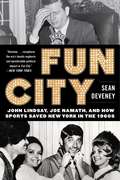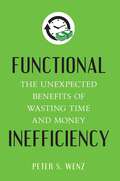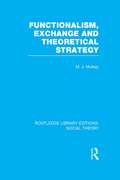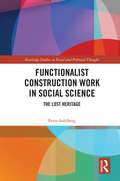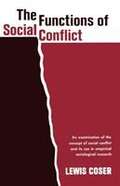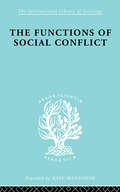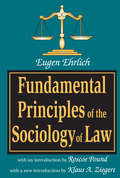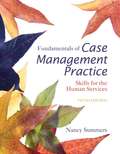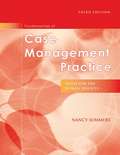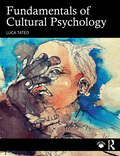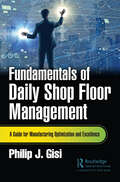- Table View
- List View
Fully Human: 3 Steps to Grow Your Emotional Fitness in Work, Leadership, and Life
by Susan PackardHGTV cofounder Susan Packard launches the next chapter in emotional intelligence (EQ), and shows you how to increase your personal satisfaction and productivity—in work and life—via her three-step path toward EQ Fitness. Emotions can sink us, or they can power us like fuel to succeed. Many of us show up for work, and life, feeling lonely even in a room full of people, or bringing unproductive emotions into work, like anger or fear. You don’t have to feel this way. Susan Packard offers an accessible new guidebook to grow your emotional fitness, and it’s arrived just in time, as technology is quickly becoming our main interface for communication. No matter where you are in your career, success is an inside job. Packard lays out how to develop interdependent work relationships, and for leaders, how to build healthy company cultures. Packard introduces us to successful people, and companies, that are rich with ‘connector’ emotions like hope, empathy and trust-building. She tackles unconventional topics, like how workaholism keeps us emotionally adolescent, and how forgiveness belongs in the workplace too. Packard shares her EQ Fit-catalyzed success at HGTV and the stories of the executives she coaches in mindfulness and other emerging techniques, and she teaches an ‘inside out’ practice of self-discovery, which helps you uncover unproductive emotions, and dispel them. The best leaders balance power and grace, and everyone can effectively use resilience--an ability to endure tough situations and make tough decisions, and vulnerability, a willingness to open up, change, and admit when we need help. She offers new tools to bring our strongest emotional selves to work each day.
Fun City: John Lindsay, Joe Namath, and How Sports Saved New York in the 1960s
by Sean DeveneyOn January 1, 1966, New York came to a standstill as the city’s transit workers went on strike. This was the first day on the job for Mayor John Lindsay--a handsome, young former congressman with presidential aspirations--and he would approach the issue with an unconventional outlook that would be his hallmark. He ignored the cold and walked four miles, famously declaring, "I still think it is a fun city. ” As profound social, racial, and cultural change sank the city into repeated crises, critics lampooned Lindsay’s "fun city. ” Yet for all the hard times the city endured during and after his tenure as mayor, there was indeed fun to be had. Against this backdrop, too, the sporting scene saw tremendous upheaval. On one hand, the venerable Yankees--who had won 15 pennants in an 18-year span before 1965--and the NFL’s powerhouse Giants suddenly went into a level of decline neither had known for generations, as stars like Mickey Mantle and Whitey Ford on the diamond and Y. A. Tittle on the gridiron aged quickly. But on the other, the fall of the city’s sports behemoths was accompanied by the rise of anti-establishment outsiders--there were Joe Namath and the Jets, as well as the shocking triumph of the Amazin’ Mets, who won the 1969 World Series after spending the franchise’s first eight seasons in the cellar. Meanwhile, the city’s two overlooked franchises, the Knicks and Rangers, also had breakthroughs, bringing new life to Madison Square Garden. The overlap of these two worlds in the 1960s--Lindsay’s politics and the reemerging sports landscape--serves as the backbone of Fun City. In the vein of Ladies and Gentlemen: The Bronx is Burning, the book tells the story of a remarkable and thrilling time in New York sports against the backdrop of a remarkable and often difficult time for the city, culturally and socially. The late sixties was an era in which New York toughened up in a lot of ways; it also was an era in which a changing of the guard among New York pro teams led the way in making it a truly fun city.
Fun Works: Creating Places Where People Love to Work (2nd edition)
by Leslie YerkesDemonstrates how 11 successful companies, including Southwest Airlines, Pike Place Fish, Isle of Capri Casinos, and Prudential, have integrated fun into the normal course of business and shows how this has translated into improved results across the board. The book includes b&w photos and assessment worksheets, plus lists of books and leaders in the field. Yerkes is president of an organizational development firm. Annotation c. Book News, Inc., Portland, OR (booknews.com)
Functional Assessment and Program Development for Problem Behavior: A Practical Handbook
by Jeffrey R. Sprague Robert H. Horner Keith Storey Robert E. O'Neill Richard W. AlbinFUNCTIONAL ASSESSMENT AND PROGRAM DEVELOPMENT FOR PROBLEM BEHAVIOR: A PRACTICAL HANDBOOK, Third Edition, guides readers through the procedures of conducting a functional assessment, including a variety of strategies for assessing problem behavior situations. The book also presents a systematic approach for designing behavioral support programs based on those assessments. Professionals and students alike appreciate the step-by-step guidance as well as the wealth of examples and forms that equip users to begin conducting functional assessments and developing their own intervention programs.
Functional Form And Utility: A Review Of Consumer Demand Theory
by Arthur GoldbergerThis book presents a review of classical consumer demand theory, emphasizing the form of utility and demand functions. The theory is developed in general terms with reference to the linear expenditure system and with reference to alternative specifications of complete sets of demand functions.
Functional Inefficiency: The Unexpected Benefits of Wasting Time and Money
by Peter S. WenzHow can we reduce unemployment? As this insightful and counterintuitive book shows, the surprising answer is inefficiency. Some of the most labor-intensive sectors of the economy, the author notes, are also the most inefficient. But this inefficiency is functional-rather than impairing the economy, it bolsters employment and fosters economic growth. Technological progress increases efficiency and reduces the need for workers in manufacturing, mining, agriculture, and many services. So how do we keep people working? By maintaining inefficiencies in other areas, such as in our systems of transportation and healthcare. The author documents the waste of time and money in hospital systems, the insurance and pharmaceutical industries, automotive travel, and road construction and maintenance. These inefficiencies are tolerated because they provide a lot of jobs and promote economic growth, making them functional inefficiencies. Some of these inefficient systems come with added environmental and health costs, meaning we sacrifice more than simple efficiency for the sake of jobs. Our inefficiencies may be functional, argues Peter Wenz, but they are too often harmful for us as well. The good news is that most of these inefficiencies can be reduced without increasing unemployment or impairing economic growth. Wenz explores different methods of combating unemployment, evaluating each method carefully to determine its basic efficiencies and inefficiencies, as well as its impact on human wellbeing and on the environment. He also assesses whether it is culturally and politically acceptable and actually serves to reduce unemployment. Some inefficiency will remain, he concludes, but its negative impacts can be lessened through increased investment in physical and human infrastructure. Functional Inefficiencyoffers a wealth of details and a unique analysis of our economic system, plus hope for our future prospects through reduced inefficiency.
Functional Job Analysis: A Foundation for Human Resources Management (Applied Psychology Series)
by Sidney A. Fine Steven F. CronshawThis book was written to address the need for timely, thorough, practical, and defensible job analysis for HR managers. Under continuing development over the past 50 years, Functional Job Analysis (FJA) is acknowledged by major texts in HR and industrial/organizational psychology as one of the premier methods of job analysis used by leading-edge organizations in the private and public sectors. It is unique among job analysis methods in having its own in-depth theoretical grounding within a systems framework. In addition to providing a methodology for analyzing jobs, it offers a rich model and vocabulary for communicating about the competencies (skills) contributing to work success and about the design of the work organization through which those competencies are expressed. FJA is the right theory and methodology for future work in an increasingly competitive global economy. This book is the authoritative source describing how FJA can encourage and support an ongoing dialogue between workers and management as they jointly pursue total quality, worker growth, and organization performance. It is a flexible tool, fully recognizing the rapid changes impacting today's organizations. It is a comprehensive tool, leading to an in-depth understanding of work, its results, and its improvement in a unique organization context. It is a humane tool, viewing workers in light of their full potential and capacity for positive growth. With FJA, workers and managers can work more constructively together in a wholesome and productive work relationship.
Functionalism, Exchange and Theoretical Strategy (Routledge Library Editions: Social Theory)
by Michael MulkayM.J. Mulkay traces the development of certain recent versions of functionalism and exchange theory in sociology, with special attention to 'theoretical strategy'. He uses this term to refer to the policies which theorists adopt to ensure that their work contributes to their long range theoretical objectives. Such strategies are important, he believes, because they place limits on the theories with which they are associated. He shows how each of the theorists he studies devised a new strategy to replace the unsuccessful policies of a prior theory in a process of 'strategical dialectic'. This often has unforeseen consequences for the direction of theoretical growth, and the author interprets changes in theoretical perspective largely as products of these strategical innovations.
Functionalist Construction Work in Social Science: The Lost Heritage (Routledge Studies in Social and Political Thought)
by Peter SohlbergAn understanding of the complex consequences of social processes and social design activities necessitates a holistic systemic perspective, systematised in the classic structural-functional research tradition, which is presented in Functionalist Construction Work in Social Science. In contrast to fragmented discussions of functionalism and functional analyses, the approach here covers a span ranging from ontological, epistemological and primarily methodological aspects of functionalism. The functionalist tradition in social science is placed in a historic context, and problematised from a philosophy of science perspective. Unique here is a detailed account of four classic functionalist research programmes with a discussion of functionalism, not primarily as a worldview, but as systematic knowledge-generating research strategies. In addition to descriptive and causal questions, the importance of a further research question is demonstrated, i.e., the identification of crucial problems of social organisation. Functionalist research strategies and functional analysis are of interest for social scientists and students in sociology, political science, and social anthropology. Moreover, the book is relevant for researchers and students of philosophy of science and social science methodology
Functns Soc Conflict Ils 110 (International Library of Sociology)
by Lewis A. CoserPublished in 1998, Functns Soc Conflict Ils 110 is a valuable contribution to the field of Sociology and Social Policy.
Fundamental Feminism: Radical Feminist History for the Future
by Judith GrantIn this updated classic, Judith Grant provides a new introduction and postscript that frames her original work as part of a larger argument about the importance of structuralism in radical feminist ideas of patriarchy. Forewords by esteemed feminist theorists reintroduce the new edition to the latest generation of feminist students and scholars. In Fundamental Feminism, Judith Grant explores the evolution of feminist theory in the context of today's feminist thought. In the original work, Grant analzyed three core concepts in feminist theory – "woman," "experience," and "personal politics" – from their origins in pamphlets and writings from the early women's liberation movement to their later constructions in feminist thought. In this second edition, she argues for the pivotal role of early radical feminism and the longstanding influence of these core assumptions on current theories including intersectional theory, queer theory structuralism and poststructuralism, and ongoing discussions about the sexuality debates of the 1980s. Fundamental Feminism is provocative reading for anyone interested in the history and future of feminist theory and the power of feminist politics.
Fundamental Issues in Defense Training and Simulation (Human Factors in Defence)
by George Galanis Robert SottilareDefense forces have always invested a great deal of their resources in training. In recent times, changes in the complexity and intensity of operations have reaffirmed the importance of ensuring that warfighters are adequately prepared for the environments in which they are required to work. The emergence of new operational drivers such as asymmetric threats, urban operations, joint and coalition operations and the widespread use of military communications and information technology networks has highlighted the importance of providing warfighters with the competencies required to act in a coordinated, adaptable fashion, and to make effective decisions in environments characterized by large amounts of sometimes ambiguous information. While investment in new technologies can make available new opportunities for action, it is only through effective training that personnel can be made ready to apply their tools in the most decisive and discriminating fashion. There are many factors which can have an impact on the efficacy of training and many issues to consider when designing and implementing training strategies. These issues are often complex and nuanced, and in order to grasp them fully a significant investment of time and energy is required. However, the requirement to respond quickly to ever-changing technology, a high operational tempo and minimal staffing may preclude many in today's defense forces from seeking out all such resources on their own. This edited collection provides brief, easy-to-understand summaries of the key issues in defense training and simulation, as well as guidance for further reading. It consists of a collection of short essays, each of which addresses a fundamental issue in defense training and simulation, and features an up-to-date reference list to enable the reader to undertake further investigation of the issues addressed. In essence, this book provides the optimum starting point, or first resource, for readers to come to terms with the important issues associated with defense training and simulation. The contributions are written by leading scholars from military research institutions in the US, UK, Canada, Australia and New Zealand, as well as selected researchers from academic and private sector research institutions.
Fundamental Principles of the Sociology of Law
by Eugene Ehrlich Klaus A. ZiegertThe innovative and revolutionary scholarship of the eminent Austrian legal theorist and professor of Roman law, Eugen Ehrlich (1862-1922), is of a very high caliber. His work has not only held its place well in view of what legal theory, especially sociological legal theory, has to offer, but is also still a powerful challenge to positions in legal theory that are no longer defensible. The sociology of law has followed in a direct line of succession from Ehrlich's observations and ideas as a new and special discipline linking jurisprudence with sociology.
Fundamental Rights: History of a Constitutional Doctrine
by Milton KonvitzOne of the most important modern developments in American constitutional law has been the extension of the Bill of Rights to the states. The most important guarantees of the first eight amendments have been incorporated into the Due Process Clause of the Fourteenth Amendment, along with the doctrine that these are rights that are so "fundamental" that any restriction is subject to judicial "strict scrutiny." The process has nationalized fundamental rights, giving them a preferred dignity and majesty. In this volume, the renowned constitutional scholar, Milton Konvitz, traces the development of fundamental rights from the early days of American jurisprudence through twentieth-century cases involving the right to privacy, racial discrimination, voting rights, censorship, and abortion laws. In Konvitz's astute view, the Bill of Rights in the Constitution of the United States, like the Ten Commandments, places no priority among protected or guaranteed rights. He argues that values, ideals, rights, liberties, and privileges need to be placed in a hierarchical order or scale. The Supreme Court, acting on a case-by-case basis, has slowly and cautiously moved to designate some rights as superior to others. This idea that some rights are of a "fundamental" nature, while others are not, can be traced back to the early days of the nation's government. Konvitz shows that there may be said to be not one, but two or even three bills of rights, one for the Federal government and one for the States. Still another, may be an unwritten but evolving Bill of Rights. The Court has recognized rights or liberties that are in no written constitution, as for example, a right to marry, a right to have a family, a right to choose education of one's children in a private, even a religious, school, rather than a public school. In an illuminating fashion, Konvitz, whose writings have been cited in Supreme Court decisions, traces the controversial and very uneven line of development of
Fundamental Statistics for the Behavioral Sciences 8th Edition
by David C. HowellFUNDAMENTAL STATISTICS FOR THE BEHAVIORAL SCIENCES focuses on providing the context of statistics in behavioral research, while emphasizing the importance of looking at data before jumping into a test. This practical approach provides readers with an understanding of the logic behind the statistics, so they understand why and how certain methods are used--rather than simply carry out techniques by rote. Readers move beyond number crunching to discover the meaning of statistical results and appreciate how the statistical test to be employed relates to the research questions posed by an experiment. An abundance of real data and research studies provide a real-life perspective and help you understand concepts as you learn about the analysis of data.
Fundamental Statistics for the Social and Behavioral Sciences
by Howard T. TokunagaFundamental Statistics for the Social and Behavioral Sciences, Second Edition places statistics within the research process, illustrating how they are used to answer questions and test ideas. Students learn not only how to calculate statistics, but also how to interpret and communicate the results of statistical analyses in light of a study’s research hypothesis. Featuring accessible writing and well-integrated research examples, the book gives students a greater understanding of how research studies are conceived, conducted, and communicated. New and Proven Features Updated data sets and research examples address real-world issues and topics across the social and behavioral sciences, illustrating the use of statistical procedures to test research questions and hypotheses. Significantly expanded discussion of linear and multiple regression and correlation now gives regression its own separate chapter. Thorough presentation of formulas, hand calculations, and the presentation of visual data enable mastery of key techniques and prove especially helpful in flipped or online classes. In-chapter learning checks and end-of-chapter exercises give students an opportunity to continually assess their understanding. Screenshots of statistical calculations using IBM® SPSS® Statistics at the end of chapters help students learn to use SPSS software and interpret output. Original SAGE videos for each chapter, featuring author Howard K. Tokunaga, bring concepts to life and appeal to diverse learners.
Fundamental Statistics for the Social and Behavioral Sciences
by Howard T. TokunagaFundamental Statistics for the Social and Behavioral Sciences, Second Edition places statistics within the research process, illustrating how they are used to answer questions and test ideas. Students learn not only how to calculate statistics, but also how to interpret and communicate the results of statistical analyses in light of a study’s research hypothesis. Featuring accessible writing and well-integrated research examples, the book gives students a greater understanding of how research studies are conceived, conducted, and communicated. New and Proven Features Updated data sets and research examples address real-world issues and topics across the social and behavioral sciences, illustrating the use of statistical procedures to test research questions and hypotheses. Significantly expanded discussion of linear and multiple regression and correlation now gives regression its own separate chapter. Thorough presentation of formulas, hand calculations, and the presentation of visual data enable mastery of key techniques and prove especially helpful in flipped or online classes. In-chapter learning checks and end-of-chapter exercises give students an opportunity to continually assess their understanding. Screenshots of statistical calculations using IBM® SPSS® Statistics at the end of chapters help students learn to use SPSS software and interpret output. Original SAGE videos for each chapter, featuring author Howard K. Tokunaga, bring concepts to life and appeal to diverse learners.
Fundamental and Applied Sciences in Asia: International Conference on Science Technology and Social Sciences (ICSTSS 2018)
by Nor Azizah Yacob Nor Yuziah Mohd Yunus Duratul Ain Tholibon Zadariana Jamil Syuhada Mohd TahirThis book gathers selected science and technology papers presented at the 2018 International Conference on Science Technology and Social Sciences (ICSTSS 2018), organised bi-annually by Universiti Teknologi MARA Pahang, Malaysia. Based on the theme “Redesigning Education for Industrial Revolution”, the papers in this book address a broad range of topics in the fundamental and applied sciences, including computer science, engineering, environmental and management, furniture, forestry, health and medicine, material science, mathematics, plantation and agrotechnology, sport science and statistics, covering theoretical, numerical and experimental studies. The book serves as a platform for disseminating research findings by academicians of local, regional and global prominence, as a catalyst to inspire positive innovations in the development of the region. It provides a significant point of reference for academicians and students: for academicians, it is a good source of information to conduct further research; for students, it is the latest point of reference on research conducted in their fields of study. The carefully reviewed papers intend to facilitate the creation of new knowledge through the exchange of ideas, strategies and innovations in various science and technology disciplines, and to contribute towards enhancing the learning environment.
Fundamentals of Applied Multidimensional Scaling for Educational and Psychological Research
by Cody S. DingThis book explores the fundamentals of multidimensional scaling (MDS) and how this analytic method can be used in applied setting for educational and psychological research. The book tries to make MDS more accessible to a wider audience in terms of the language and examples that are more relevant to educational and psychological research and less technical so that the readers are not overwhelmed by equations. The goal is for readers to learn the methods described in this book and immediately start using MDS via available software programs. The book also examines new applications that have previously not been discussed in MDS literature. It should be an ideal book for graduate students and researchers to better understand MDS. Fundamentals of Applied Multidimensional Scaling for Educational and Psychological Research is divided into three parts. Part I covers the basic and fundamental features of MDS models pertaining to applied research applications. Chapters in this section cover the essential features of data that are typically associated with MDS analysis such as preference ration or binary choice data, and also looking at metric and non-metric MDS models to build a foundation for later discussion and applications in later chapters. Part II examines specific MDS models and its applications for education and psychology. This includes spatial analysis methods that can be used in MDS to test clustering effect of items and individual differences MDS model (INDSCAL). Finally, Part III focuses on new applications of MDS analysis in these research fields. These new applications consist of profile analysis, longitudinal analysis, mean-level change, and pattern change. The book concludes with a historical review of MDS development as an analytical method and a look to future directions.
Fundamentals of Case Management Practice: Skills for the Human Services
by Nancy SummersThis book/workbook is a step-by-step guide through the case management process, from intake and assessment to referrals and termination. The fifth edition focuses on what is most important for readers to consider, document, and pass along in each step of the human services process. Chapters walk readers through each step of the case management process, while realistic exercises drawn from active professionals expose readers to a broad range of true-to-life circumstances and difficulties.
Fundamentals of Case Management Practice: Skills for the Human Services (3rd Edition)
by Nancy SummersSummers (Harrisburg Area Community College) walks through the case management process, and offers advice on meeting clients, recording initial inquiries, using the DSM IV, developing a service plan, monitoring service or treatment, and effectively documenting the process. The workbook format provides exercises for developing practical skills, and sample social service forms on perforated pages. The second edition adds a chapter on social histories and assessment forms.
Fundamentals of Cultural Psychology
by Luca TateoThis innovative textbook is the ideal introduction to cultural psychology. It focuses on a holistic approach, which emphasizes that culture is created and shared by minds and society.Organized around short core concept chapters, the book encourages students to think critically about culture and the theories around it. Chapters explore what cultural psychology is and its forms of knowing, how cultural psychology can be used to understand higher psychological functions, and the human psyche as a whole. Each chapter contains definitions of key concepts, real-world examples from everyday human activities, reflection questions, short biographies of key figures relevant to cultural psychology, and chapter summaries. There are also links to video interviews from leading international scholars which provide critical reflections on core concepts in cultural psychology.This is the essential introductory book for students of cultural psychology, as well as cultural studies and anthropology. It will be useful for anyone looking to learn more about the history of ideas, the human mind, and its historical and material relationship with culture.
Fundamentals of Daily Shop Floor Management: A Guide for Manufacturing Optimization and Excellence
by Philip J. GisiSurvival and thriving in today’s business environment require companies to continuously strive for operational excellence at all levels of the organization. Simply working to maintain existing operations is not an adequate or sustainable business strategy, especially when competing in a global market. To remain relevant, companies must adopt a process control and continuous improvement mentality as an integral part of their daily work activities. These two operational disciplines form the foundation and stepping stones for manufacturing excellence. Processes must be stable, capable, and controlled as a prerequisite for sustainable improvement. Sustainable improvements must be strategic, continuous, and focused on process optimization. Modern-day manufacturing is rapidly changing in the face of technological, geopolitical, social, and environmental developments. These challenges are altering the way we think and act to transform raw materials into finished goods. Meeting these challenges requires particular attention to how we develop and engage people and apply technology for long-term sustainability and competitive advantage. This book takes you on a journey to explore the fundamental elements, management practices, improvement methods, and future direction of shop floor management. Part 1 of this five-part manuscript considers workplace culture, organizational structure, operational discipline, and employee accountability as the foundation for a robust manufacturing system. Part 2 studies the impact of process standardization, data analytics, information sharing, communication, and people on daily shop floor management. Once the management system has been adequately described, Part 3 concentrates on its effective execution, monitoring, and control with a deep look into the people, methods, machines, materials, and environment that make it possible. Like every good manufacturing text, efficiency and productivity are key topics. That’s why Part 4 explores various methods, tools, and techniques associated with product and process development, productivity improvement, agile methods, shop floor optimization, and manufacturing excellence. The final section, Part 5, shifts focus to emerging technologies, engaging the reader to contemplate technology’s impact on the digital transformation of the manufacturing industry.
Fundamentals of Effective Mentorship: How to Develop Intellectual Capacity and Healthy Workplace Culture
by Matthew AslettGame AI Uncovered: Volume Three continues the series with another collection of chapters from 18 of the top game AI professionals and researchers, from around the world. Each chapter includes wisdom, ideas, tips, and tricks that were used in the development of video games.The techniques discussed in these pages cover the underlying development of a wide array of published titles, including Watch Dogs: Legion, City of Gangsters, Eve: Valkyrie, Firefall, The Persistence, Advance Soccer, Alpha Beta Gunner, and Luna Abyss.Contained within this volume are insights that cover a host of different areas within game AI, including vehicle AI, simulating social norms, AI spawning fundamentals, pathfinding, creation of characters using components, animation-driven behaviour, tactical positioning in football, automated testing, abstract pattern matching, and machine learning for games.Beginners in the area of game AI, along with professional developers, will find a wealth of knowledge that will not only help in the development of their own games but also spark ideas for new approaches.This volume includes chapters written by Dr Allan Bruce, Anubha Banerjee, Bruno Rebaque, Dale Green, David Wooldridge, Eric S. Le Saux, Greg Irwin, Jason Lok Heng Chin, Johan Holthausen, John Reynolds, Mathias Siemonsmeier, Michele Condò, Dr Nic Melder, Paul Roberts, Phil Carlisle, Richard Bull, Robert Zubek, and Tobias Karlsson.

